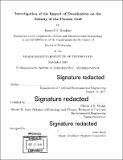| dc.contributor.advisor | Elfatih A.B. Eltahir. | en_US |
| dc.contributor.author | Ibrahim, Hamed D.(Hamed Dare) | en_US |
| dc.contributor.other | Massachusetts Institute of Technology. Department of Civil and Environmental Engineering. | en_US |
| dc.coverage.spatial | ap----- | en_US |
| dc.date.accessioned | 2018-02-08T16:25:42Z | |
| dc.date.available | 2018-02-08T16:25:42Z | |
| dc.date.copyright | 2017 | en_US |
| dc.date.issued | 2017 | en_US |
| dc.identifier.uri | http://hdl.handle.net/1721.1/113478 | en_US |
| dc.description | Thesis: Ph. D., Massachusetts Institute of Technology, Department of Civil and Environmental Engineering, 2017 | en_US |
| dc.description | Cataloged from PDF version of thesis. | en_US |
| dc.description | Includes bibliographical references (pages 137-144). | en_US |
| dc.description.abstract | The Persian Gulf (also known as the Arabian Gulf) is a shallow marginal sea located in a region of Southwest Asia with arid climate. Because of this aridity, evaporation from the Gulf is extremely high (1.84 meters per year) and far exceeds the sum of freshwater inflow to the Gulf, mainly from precipitation and some from river flow. A residual circulation exists between the Gulf and the Indian Ocean such that saline water flows into the Gulf from the Indian Ocean in order to balance the freshwater deficit due to high evaporation rate; and since evaporation only removes freshwater, the salt associated with this inflow from the Indian Ocean is removed in dense saline water that naturally sinks to lower layers and exits the Gulf into the Indian Ocean. | en_US |
| dc.description.abstract | The Gulf is also the source of seawater and sink of hypersaline effluent (brine) for many desalination plants representing about 50% of the world's seawater desalination capacity, because many of the countries on the Gulf have increasing human populations but no renewable freshwater resources. It has been recognized long ago that the impact of brine discharge on the Gulf cannot be discussed separately from the dynamics of the residual circulation, but to date there is no basin scale environmental analysis for the impact of seawater desalination activity on the Gulf. A coupled Gulf-Atmosphere Regional Model that simulates the residual circulation between the Gulf and the Indian Ocean is used to investigate the impact of desalination on the salinity of the Gulf. Satellite data on sea surface temperature and water surface elevation are used to constrain the model, and to analyze trends in the Gulf. Four main contributions of this thesis are emphasized. | en_US |
| dc.description.abstract | First, the equilibrium state variables describing the Gulf are identified, including a new estimate of Gulf basin salinity of ~~ 40.5 - 41g/kg. Second, it is shown that desalination has minimal impact on salinity averaged at the basin scale but significant impact at regional scale. Changes in regional salinities are used to quantify the impact of desalination in different regions within the Gulf. Third, a specific criterion for placement of brine discharge systems in the Gulf that minimizes regional salt accumulation is proposed in order to guide planning and design of future seawater desalination plants, as well as management of existing plants. Lastly, trend analysis shows a small trend in sea surface temperature (~~2°C during 1993 - 2014), most likely caused by climate change, but slight trends in Gulf basin salinity that are likely due to natural variability. | en_US |
| dc.description.statementofresponsibility | by Hamed D. Ibrahim. | en_US |
| dc.format.extent | 144 pages | en_US |
| dc.language.iso | eng | en_US |
| dc.publisher | Massachusetts Institute of Technology | en_US |
| dc.rights | MIT theses are protected by copyright. They may be viewed, downloaded, or printed from this source but further reproduction or distribution in any format is prohibited without written permission. | en_US |
| dc.rights.uri | http://dspace.mit.edu/handle/1721.1/7582 | en_US |
| dc.subject | Civil and Environmental Engineering. | en_US |
| dc.title | Investigation of the impact of desalination on the salinity of the Persian Gulf | en_US |
| dc.type | Thesis | en_US |
| dc.description.degree | Ph. D. | en_US |
| dc.contributor.department | Massachusetts Institute of Technology. Department of Civil and Environmental Engineering | en_US |
| dc.identifier.oclc | 1019904220 | en_US |
| dc.description.collection | Ph.D. Massachusetts Institute of Technology, Department of Civil and Environmental Engineering | en_US |
| dspace.imported | 2019-06-17T20:47:19Z | en_US |
